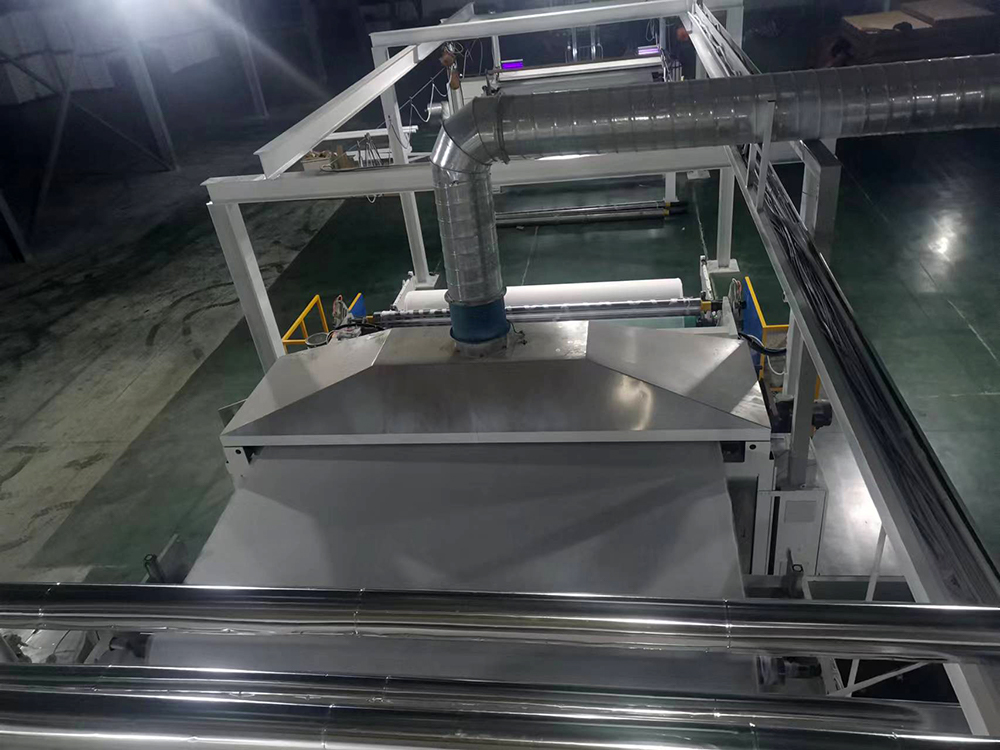Non-woven fabrics are widely used in various industries. It includes healthcare, automotive, agricultura, and home furnishing. They are made from fibers or filaments bonded together through mechanical, thermal, or chemical processes, without the use of weaving or knitting. Non-woven fabrics have several advantages over traditional woven or knitted fabrics. Such as high absorbency, liquid repellency, breathability, blandura, and durability.
The production of non-woven fabrics involves several processes. It includes fiber preparation, web formation, web bonding, and finishing. Non-woven fabric machines are designed to carry out these processes efficiently and effectively. In this post, we will discuss the essential non-woven fabric machines: the melt blown machine, the non-woven fabric machine and the spunbonded nonwovens production line.

Melt blown machine always the importance
The melt blown machine as used to produce melt-blown non-woven fabrics. Melt-blown fabrics are made by melting and extruding thermoplastic polymers. Such as polypropylene, into fine fibers, which are then cooled and bonded together to form a web. Melt-blown fabrics have high filtration efficiency. Además, they are widely used in medical and hygiene applications. Such as surgical masks, N95 respirators, and surgical gowns.
The melt blown machine consists of several components. It includes an extruder, a die, a hot air blower, a web forming unit, and a winder. The extruder melts the polymer and extrudes it through the die, which has small orifices. The hot air blower blows hot air onto the extruded fibers, which cool and bond together to form a web. The web is then wound onto a roll by the winder.
Spunbonded nonwovens produced by production line
En primer lugar, the línea de producción de telas no tejidas hiladas is used to produce spunbonded non-woven fabrics. Spunbonded fabrics are made by extruding filaments of thermoplastic polymers, such as polypropylene, which are then cooled and bonded together to form a web. Spunbonded fabrics have high strength and durability and are widely used in various applications, such as geotextiles, agricultura, and home furnishing.
Secondly, the spunbonded nonwovens production line consists of several components, incluyendo una extrusora, una hilera, a quenching unit, a web forming unit, and a winder. The extruder melts the polymer and extrudes it through the spinneret, which has multiple holes. The filaments are then quenched by cool air and collected on a moving belt, where they form a web. The web is then wound onto a roll by the winder.
Non woven fabric machine combining different fibers or filaments
El non woven fabric machine is used to produce non-woven fabrics by combining different fibers or filaments through mechanical, thermal, or chemical processes. Non-woven fabrics produced by non-woven fabric machines have various properties, depending on the fibers and bonding methods used. Non-woven fabrics can be used in various applications, such as hygiene, medical, automotive, and filtration.
The non woven fabric machine consists of several components. It includes a carding machine, a cross-lapper, a needle loom, and a winder. The carding machine separates and aligns the fibers or filaments, which are then laid down in layers by the cross-lapper. The layers are then bonded together by the needle loom, which uses barbed needles to entangle the fibers or filaments. The bonded web is then wound onto a roll by the winder.
